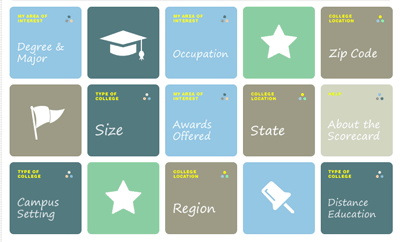The Young Politica: Scoring Obama’s New College Scorecard
During last Tuesday’s State of the Union address, President Barack Obama revealed the new College Scorecard, which aims to help prospective college students decide which schools would be right for them based on several variables (cost, distance, etc.).
A yet-to-be-seen component of the site is each college’s return on investment (ROI). This will highlight colleges that have the most ‘bang for your educational buck’.
Bill Destler for the Huffington Post, argued that forcing all schools through the same ROI filter may hinder some schools’ ability to compete. Destler does not think all schools are equal. He cites the Rochester Institute of Technology, which has a 10% deaf or hard-of-hearing population.
“…deaf graduates from RIT are employed at a much higher rate than the deaf population as a whole, they still have a more difficult time finding employment and they don’t earn as much on average as their hearing counterparts.”
Should RIT be judged on the same level as every other school when it has this special interest in mind?
The scorecard makes makes macroeconomic sense when the idea is to show students the most affordable colleges. After all, that’s why the college scorecard was created in the first place—to educate prospective college students on their most affordable options in order to slow the increase of the national debt.
In order to score high on the ROI, schools would need to sacrifice arts and soft sciences programs—which, overall, have lower-paying wages and less use for the federal government. Even though these programs are already fading because they are underfunded by the government, they will continue to hinder their respective university’s ROI. In the coming years, we’ll see more schools contemplating over whether these programs economically valuable enough to keep.
Affordability and majors available at a university are only a few parts of the spectrum which encompasses a student’s interests when selecting a school. What if a student thinks they would learn more at a small college? What if they wanted to attend a Historically Black College? According to the Huffington Post, instead of taking these into account, the ROI filters using these three characteristics: cost of attendance, graduation rate, and high employment rate and salaries for graduates.
Thus, schools which have low graduation rates because of academic competitiveness may be subject to ROI scrutiny. The ROI completely ignores trades which see service, rather than pay rates, as the reward in return. Teachers may not be paid as much as biologists, but they provide a service that is necessary for our economy.
The new College Scorecard will have trouble providing prospective college students with an objective view of which college they should attend, because each student holds different values for what they consider to be a valuable education. Even within each school program, there is discrepancy between why one chooses to attend. I chose to attend New York University, not for its affordability, but for its proximity to jobs in media. My roommate, however, chose NYU because she was granted a large scholarship for majoring in the sciences.
The College Scorecard is great for assessing the overall financial value of a trade school, college, or university. However, I urge prospective college students not to use this scorecard as a foundation for your school choice, but as one tool in your research toolbox when deciding where to attend.
Maegan Vazquez, a Texas born sophomore at New York University, brings her young woman’s lens on all things political to Heartfeldt Blog every Monday. Send news tips to maeganvaz@gmail.com
